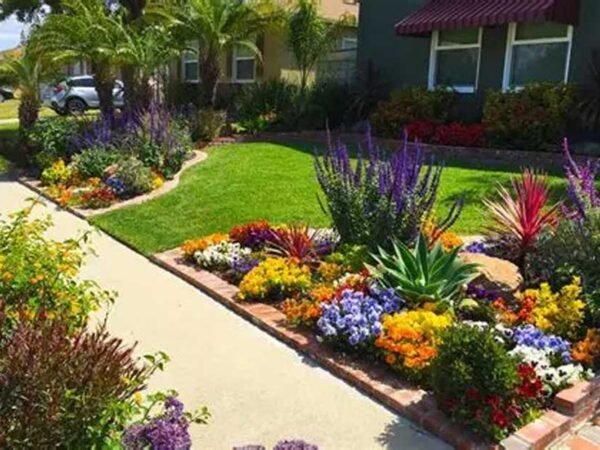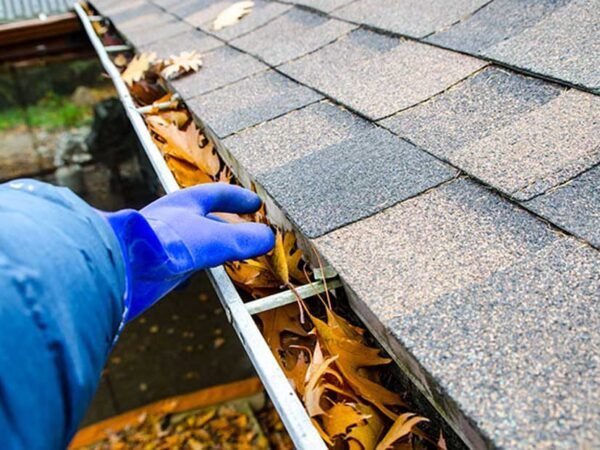A kitchen backsplash not only enhances your space visually but also shields your walls from daily splashes, grease, and moisture. Over time, even the most durable surfaces need attention to stay fresh and functional. With simple cleaning routines, practical maintenance tips, and expert-approved care practices, you can preserve the beauty and longevity of your backsplash, whether it’s tile, glass, or stone, making upkeep easier than ever.
Material Knowledge Changes Everything
Spraying cleaner on your walls without knowing what you’re dealing with? That’s asking for trouble. Each tile material responds differently to cleaning agents, and the wrong product can inflict lasting harm when you’re cleaning kitchen backsplash tile.
Today’s marketplace offers an overwhelming range of kitchen backsplash tile options. Ceramic, glass, natural stone, and even copper each require unique care and maintenance. The selection has grown significantly in recent years, with styles ranging from classic subway patterns to modern terrazzo designs. Finding suitable kitchen backsplash tile options is now easier than ever. With so many choices available, it is essential to match your cleaning and care strategy to the specific material you select.
Stone Surfaces Demand Gentleness
Marble, granite, travertine, they’re stunning showstoppers. Also, surprisingly fragile. Their porous nature means acidic cleaners get absorbed, creating permanent dull patches and etching you can’t undo. Your safest bet? pH-neutral formulas only, plus resealing twice yearly at a minimum. That trendy vinegar cleaning hack everyone loves? Forget it. It’ll dissolve the stone’s protective layer faster than you’d believe possible.
Ceramic and Porcelain Forgive Mistakes
Wondering about the ceramic vs porcelain backsplash differences when cleaning? Both materials earn their popularity through durability and forgiving natures. Ceramic typically costs less upfront. Porcelain delivers superior moisture resistance and toughness. But maintenance? Nearly identical for both. Basic dish soap mixed with water handles most situations beautifully.
Glass Broadcasts Every Imperfection
Glass backsplashes catch light magnificently, until fingerprints and water spots turn them into evidence boards. They need streak-free solutions and ultra-soft cloths to maintain their signature clarity. Never touch them with abrasive scrubbers. Ever. One session with a rough pad creates permanent cloudiness and scratches that no amount of polishing will erase.
Stock These Essentials Without Overbuying
Let’s discuss maintaining kitchen backsplash surfaces using supplies that respect both your budget and cabinet space. Most everyday cleaning doesn’t require specialized products at all.
What You’ll Reach for Daily
Microfiber clothes? Absolute game-changers. They capture grease without scratching anything, and they last for years with proper washing. One spray bottle containing warm water and a drop or two of dish soap conquers roughly 90% of daily messes. That’s the whole arsenal, really.
When Standard Solutions Fall Short
Stubborn accumulation occasionally requires heavier approaches. Baking soda paired with white vinegar (only on compatible surfaces) delivers impressive results. A soft-bristled grout brush navigates narrow lines without harming tile edges. Commercial degreasers earn their keep for brutal jobs near the range, though testing first is non-negotiable.
Simple Cleaning Systems Beat Complicated Ones
You don’t need an elaborate protocol for how to clean backsplash tiles effectively. Consistent, simple routines outperform intensive monthly marathons every single time.
Rapid Daily Touch-Ups
Immediately after cooking, snag a damp microfiber cloth. Wipe areas surrounding your stove and prep stations. This two-minute practice stops grease from hardening, saving hours of aggressive scrubbing later. Fresh splatters wipe away effortlessly while they’re still moist.
Weekly Thorough Sessions
Apply your cleaning mixture from ceiling to counter, allow 2-3 minutes of contact time, then wipe using circular motions. Rinse thoroughly with fresh water; residue attracts dirt. Dry completely with clean fabric to eliminate water spots, particularly on glass or polished finishes. The entire process rarely exceeds 10 minutes.
Research indicates kitchen renovations can generate 60-80% return on investment, depending on scope and quality. Maintaining your backsplash’s condition directly protects that home value investment.
Monthly Focused Attention
Target grout lines using a dedicated brush and paste-style cleaner. Assess sealant effectiveness by sprinkling water on tiles; proper beading means you’re protected. Absorption signals resealing time. Address persistent stains with material-appropriate treatments.
Conquering Difficult Buildup Situations
Regular maintenance sometimes proves insufficient. Here’s your playbook for genuinely stubborn problems that accumulate over time.
Grease Elimination Strategies That Deliver
Hot water supercharges most degreasers. Apply generously, respect the recommended dwell time completely, then scrub gently following any tile pattern direction. Rinse exhaustively; leftover degreaser becomes a dirt magnet.
Hard Water Deposit Solutions
A 50/50 vinegar mixture excels on ceramic and porcelain (but never natural stone). Spray generously, wait five minutes minimum, then wipe clean. Severe calcium deposits might demand multiple rounds. Installing a water softener prevents recurrence.
Food and Drink Stains
Coffee and red wine penetrate porous materials alarmingly fast. Blot immediately instead of wiping, as wiping spreads the stain outward. Set-in stains on natural stone require poultices, specialized pastes that extract discoloration overnight.
Grout Lines Need Dedicated Attention
Grout attracts and holds dirt like nothing else. It requires more than just wiping tiles, and the best way to clean tile backsplash grout depends entirely on whether it’s sealed.
Evaluating Grout Condition
Drip water onto your grout. Immediate absorption means the grout lacks sealing, or the seal has degraded. Properly sealed grout repels water for several seconds. Unsealed grout demands gentler methods to prevent erosion.
Effective Cleaning Approaches
Mix baking soda with hydrogen peroxide into a paste. It lifts stains and whitens naturally. Electric grout brushes save considerable time across large areas but can damage surfaces if pressed too hard. Steam cleaners sanitize without chemicals and perform excellently on sealed grout.
Sealing for Lasting Protection
Following deep cleaning, allow grout to dry completely,24 to 48 hours minimum, before applying sealant. Penetrating sealers absorb into grout and protect better than surface varieties. Reapplication frequency depends on kitchen activity; high-use spaces need yearly attention.
Prevention Beats Intervention
The real secret to maintaining kitchen backsplash beauty long-term isn’t aggressive cleaning; it’s intelligent prevention habits that become automatic.
Everyday Prevention Practices
Wipe splatters the moment they happen. Run your exhaust fan without fail whenever you cook. Keep a filled spray bottle within easy reach. These microscopic habits eliminate 90% of major cleaning crises.
Weekly Maintenance Scans
Conduct quick visual inspections for emerging stains or grout discoloration. Early detection means easy fixes. Address any concerns immediately rather than allowing them to set in permanently.
Quarterly Deep Maintenance
Every few months, pull appliances away from walls and clean hidden splatter zones. Examine caulk lines for gaps or mold development. Inspect grout for cracks that could allow water infiltration behind tiles.
Common Questions Addressed
How frequently should deep cleaning happen?
Weekly deep cleaning suits most kitchens, though cooking frequency ultimately determines your needs. Occasional cooks can extend to biweekly sessions. Daily heavy cooking might require twice-weekly attention to prevent accumulation.
Is vinegar safe for all tile types?
Absolutely not, vinegar permanently damages natural stone, marble, and granite. It’s generally safe for ceramic, porcelain, and glass tiles, but always test specialty finishes in hidden spots first.
What removes ancient baked-on grease?
Strong alkaline degreasers activated with hot water work best. Allow 10-15 minutes of contact time, then scrub using non-abrasive brushes. Severe buildup almost always demands multiple applications.
Wrapping Up Your Backsplash Care Strategy
Maintaining your backsplash’s beauty doesn’t demand expensive specialty products or weekend-consuming scrubbing marathons. The genuine secret lies in matching cleaning methods to your tile material and maintaining consistency with quick daily habits. Those brief post-cooking wipe-downs prevent the stubborn accumulation that eventually leads homeowners to consider replacement.
Your backsplash protects your walls from damage while defining your kitchen’s aesthetic character. Care for it properly, and it’ll remain beautiful for decades. Start with one small daily habit today, and you’ll never face another marathon scrubbing session.













